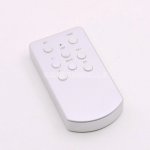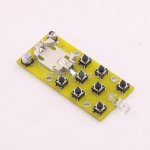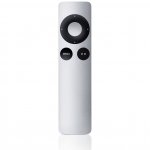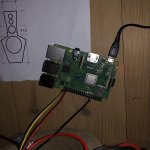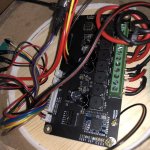lutkeveld
>If someone has a good suggestion on a general purpose IR audio remote
You don't have to be bound to any specific remote unit.
Just add an input form to your software where the user could enter their own command codes for any spare remote control he has on hand.
The IR code grabber for arduino is not much more complicated than a "hello world" app.
Below is the sketch sample from some guy on youtube
I think the device app is about the same, plus a switch-case command inside the loop. The key codes looks like 0xFF629D etc.
>If someone has a good suggestion on a general purpose IR audio remote
You don't have to be bound to any specific remote unit.
Just add an input form to your software where the user could enter their own command codes for any spare remote control he has on hand.
The IR code grabber for arduino is not much more complicated than a "hello world" app.
Below is the sketch sample from some guy on youtube
Code:
#include "IRremote.h"
IRrecv irrecv(12); // Ir connected pin
decode_results results;
void setup()
{
Serial.begin(9600);
irrecv.enableIRIn();
}
void loop() {
if (irrecv.decode(&results))
{
Serial.println(results.value, HEX); // print code to console
irrecv.resume();
}
}Hi lutkeveld,
your amp looks like a really nice and highly integrated solution e.g. for two-way active speakers.
I have 2 questions:
- Is the amp EMI/EMC certified? Because I couldn't find any ferrite beads etc. on the board which are usually used to get control over high frequency radiation.
- more a question of interest: is that business even profitable due to expected low quantity of sold amp boards and high license fees for bluetooth?
your amp looks like a really nice and highly integrated solution e.g. for two-way active speakers.
I have 2 questions:
- Is the amp EMI/EMC certified? Because I couldn't find any ferrite beads etc. on the board which are usually used to get control over high frequency radiation.
- more a question of interest: is that business even profitable due to expected low quantity of sold amp boards and high license fees for bluetooth?
Nice looking tiny universal remote.
A bit pricey though. Also these type of buttons are not very reliable in the long run but costs just a few cents and easy to replace and available everywhere.
The Chinese dac makers usually choose apple remote control as IR standard.
A bit pricey though. Also these type of buttons are not very reliable in the long run but costs just a few cents and easy to replace and available everywhere.
The Chinese dac makers usually choose apple remote control as IR standard.
Attachments
Has anybody successfully connected a Raspberry Pi to the Zoudio board, bypassing the Bluetooth via I2S? The Raspberry Pi has these 4 pins available on the GPIO connector for I2S communication:
18 PCM_CLK - clock
19 PCM_FS - LR Clock (also sometimes called WS Clock)
20 PCM_DIN - Data Out from a microphone into the Pi - this will not be used I imagine!
21 PCM_DOUT - Data out from Pi, into amplifier
I know the signal leads would have to be very short and twisted together as I2S is a chip-to-chip communication standard and not board-to-board/consumer.
I'm using moOde as the Raspberry Pi audio streaming platform, and 'driver' choices for the I2S out at the very least can configure the I2S for left-justified or right-justified, based on what the Zoudio board expects - so there's some flexibility there.
Just wanted to check if anybody has done this, as that is my intended application - using a Raspberry Pi as a streamer like I'm currently doing with my Squeezebox/Squeezelite ecosystem.
Best,
Tal
references:
stack exchange post on I2S pinout confirmation
pi 3 - Confirming the I2S pins on Raspberry Pi 3 model B? - Raspberry Pi Stack Exchange
Adafruit pinout reference:
Pinouts | Adafruit I2S Audio Bonnet for Raspberry Pi | Adafruit Learning System
18 PCM_CLK - clock
19 PCM_FS - LR Clock (also sometimes called WS Clock)
20 PCM_DIN - Data Out from a microphone into the Pi - this will not be used I imagine!
21 PCM_DOUT - Data out from Pi, into amplifier
I know the signal leads would have to be very short and twisted together as I2S is a chip-to-chip communication standard and not board-to-board/consumer.
I'm using moOde as the Raspberry Pi audio streaming platform, and 'driver' choices for the I2S out at the very least can configure the I2S for left-justified or right-justified, based on what the Zoudio board expects - so there's some flexibility there.
Just wanted to check if anybody has done this, as that is my intended application - using a Raspberry Pi as a streamer like I'm currently doing with my Squeezebox/Squeezelite ecosystem.
Best,
Tal
references:
stack exchange post on I2S pinout confirmation
pi 3 - Confirming the I2S pins on Raspberry Pi 3 model B? - Raspberry Pi Stack Exchange
Adafruit pinout reference:
Pinouts | Adafruit I2S Audio Bonnet for Raspberry Pi | Adafruit Learning System
The rear of the Zoudio board shows the three I2S pins. I’m not sure if this I2S is connected to the CSRA64215 Bluetooth chip or whether it is connected to the TI TAS5825M amplifier chip which has an I2S connection between both chips. As I understand I2S is addressable so it could be the amp but could be either. Jesse would be able to answer.
The TAS5825M is adaptive to the clock rate and only need 3 lines so it could be the amp.
The TAS5825M is adaptive to the clock rate and only need 3 lines so it could be the amp.
Attachments
Any recommendation for power supply? Preferably 24V for max power output.
Also, what is the polarity layout of the power plug?
Hard to shop for a power supply without knowing this.
Also, what is the polarity layout of the power plug?
Hard to shop for a power supply without knowing this.
Last edited:
See my post #221. I went for a Mean Well UHP-200-24 dialed in at 26V which is pretty much its max and just under that of the chipamps max.
The power is not a plug but a terminal block with the polarity indicated on the back of the PCB and clearly described with the supplied documentation in the kit.
The power is not a plug but a terminal block with the polarity indicated on the back of the PCB and clearly described with the supplied documentation in the kit.
I will probably order this to a project for my off grid mountain cottage with big solar panels, lithium battery and a 3000W gasoline aggregate with a 30A charger as a backup for the dark norwegian december days 🙂
I an thinking of a console-HiFi system with horn and JBL 95 dB 12 inch driver. The compression driver in the 27x27 cm constant directivity horn has a special coating who is very smooth and fast. I would call it "beryllium light". In my main system i have JBL with Truextent diaphragm and have preferences to compare.
Something like this?

I an thinking of a console-HiFi system with horn and JBL 95 dB 12 inch driver. The compression driver in the 27x27 cm constant directivity horn has a special coating who is very smooth and fast. I would call it "beryllium light". In my main system i have JBL with Truextent diaphragm and have preferences to compare.
Something like this?
Last edited:
I have a few questions 🙂
UPLOAD PROCEDURE
When you do changrw in the DSP setting. How long time does it take upload the new setting? Can you do it on the fly like minidsp? Or does it take some seconds? Or do you have to power off/on the system in order to avoid clicks and pops?
After my experience with dsp (Groundsound and minidsp) making a good crossover setup is a iterative process who takes time. You often need to fine adjusr 100 times or more. And off coarse have measurement equipement.
BLUTOOTH
Can i use iPhone? Is it easy to change from one phone to another? Is it a reduction in sound quality?
POWER ON/OFF
How is the on/off switch made? With expensive tweeters i am afraid of ugly DC pops and clicks.
WATT
Would you say that it is a 4x15 Watt amplifier in 8 Ohm with low THD? How is the damping factor / bass cotrol? Does it have muscles?
POWER CONSUMTION
From the huge Lithium battery i will use a Victron 240W, 20A, 12-> 24 DC to DC converter. It has efficiency of 88%. The outpout is adjustable up to 30V. It will maybee be wise to set it to 23V to be safe?
Orion-Tr DC-DC Converters Isolated - Victron Energy
If i have >90 dB easy load speakers. What is the power consumtion on idle, low and high volume. Just Ca?
ANALOGUE INPUT
How is the sound quality of the AD circuit. I also have iPod 160 GB.
UPLOAD PROCEDURE
When you do changrw in the DSP setting. How long time does it take upload the new setting? Can you do it on the fly like minidsp? Or does it take some seconds? Or do you have to power off/on the system in order to avoid clicks and pops?
After my experience with dsp (Groundsound and minidsp) making a good crossover setup is a iterative process who takes time. You often need to fine adjusr 100 times or more. And off coarse have measurement equipement.
BLUTOOTH
Can i use iPhone? Is it easy to change from one phone to another? Is it a reduction in sound quality?
POWER ON/OFF
How is the on/off switch made? With expensive tweeters i am afraid of ugly DC pops and clicks.
WATT
Would you say that it is a 4x15 Watt amplifier in 8 Ohm with low THD? How is the damping factor / bass cotrol? Does it have muscles?
POWER CONSUMTION
From the huge Lithium battery i will use a Victron 240W, 20A, 12-> 24 DC to DC converter. It has efficiency of 88%. The outpout is adjustable up to 30V. It will maybee be wise to set it to 23V to be safe?
Orion-Tr DC-DC Converters Isolated - Victron Energy
If i have >90 dB easy load speakers. What is the power consumtion on idle, low and high volume. Just Ca?
ANALOGUE INPUT
How is the sound quality of the AD circuit. I also have iPod 160 GB.
Last edited:
@Ddd_rus
That should be possible. I have put it on the long-term to-do list.
@MKSounds
The board is currently self-certified. The most problematic part for EMC is the class-d output circuitry. The layout and bill of materials around the TAS5825M section is an almost 1:1 duplicate of the Texas Instrument evaluation board, which passes EMC testing easily. Also all components and assembly practices are RoHS certified.
@taloyd
Multiple people have used the I2S input with success. You can send an email to info@zoudio.com if you want the I2S hook-up instructions.
@synquasi
The BT stream comes from the CSRA64215 and is split to both amplifiers. They both receive a full data stream, but apply their own settings locally (input mixer, filters etc).
@defo
A 24V 6A+ PSU would cover most use-cases. You can get away with less if you use 12V or 8 ohm speakers for example. The polarity of the supplied DC cable (which connects to the onboard terminal block) is centre-positive, but you can of course use a centre-negative PSU if you swap around the wires on the terminal block side. Anyways, the board has reverse polarity protection on the PSU input, so if it does not work: swap it around 🙂
@superlian
Nice project! To answer your questions:
During upload (~3 seconds) settings are applied directly and also saved in memory. So yes, you can change DSP in real-time.
You can use an Iphone. Quality is generally not that different between devices as long as they support Apt-X, or in the case of Apple: AAC.
The power-on button is monitored by a microcontroller which is in ultra low-power shutdown when the board is 'off'. When it detects a press, it will execute a pop-free startup sequence and load the DSP settings. It takes about 1-2 seconds.
On 24V it has zero problems with 4x15W in 8 ohm. Damping factor is usually very low because the amp output can be hooked up directly to the speaker due to the DSP replacing a passive crossover. You can still put a big capacitor in series with the tweeter if you want to be extra safe (pops, clicks etc).
23V is fine. Idle consumption is around 95mA with both amps and BT enabled.
The A-D conversion is done by the CSRA64215 chip, which has a 16-bit 48K ADC.
That should be possible. I have put it on the long-term to-do list.
@MKSounds
The board is currently self-certified. The most problematic part for EMC is the class-d output circuitry. The layout and bill of materials around the TAS5825M section is an almost 1:1 duplicate of the Texas Instrument evaluation board, which passes EMC testing easily. Also all components and assembly practices are RoHS certified.
@taloyd
Multiple people have used the I2S input with success. You can send an email to info@zoudio.com if you want the I2S hook-up instructions.
@synquasi
The BT stream comes from the CSRA64215 and is split to both amplifiers. They both receive a full data stream, but apply their own settings locally (input mixer, filters etc).
@defo
A 24V 6A+ PSU would cover most use-cases. You can get away with less if you use 12V or 8 ohm speakers for example. The polarity of the supplied DC cable (which connects to the onboard terminal block) is centre-positive, but you can of course use a centre-negative PSU if you swap around the wires on the terminal block side. Anyways, the board has reverse polarity protection on the PSU input, so if it does not work: swap it around 🙂
@superlian
Nice project! To answer your questions:
During upload (~3 seconds) settings are applied directly and also saved in memory. So yes, you can change DSP in real-time.
You can use an Iphone. Quality is generally not that different between devices as long as they support Apt-X, or in the case of Apple: AAC.
The power-on button is monitored by a microcontroller which is in ultra low-power shutdown when the board is 'off'. When it detects a press, it will execute a pop-free startup sequence and load the DSP settings. It takes about 1-2 seconds.
On 24V it has zero problems with 4x15W in 8 ohm. Damping factor is usually very low because the amp output can be hooked up directly to the speaker due to the DSP replacing a passive crossover. You can still put a big capacitor in series with the tweeter if you want to be extra safe (pops, clicks etc).
23V is fine. Idle consumption is around 95mA with both amps and BT enabled.
The A-D conversion is done by the CSRA64215 chip, which has a 16-bit 48K ADC.
Thx lutekveld
I just placed a order 🙂
A few more Q:
Is it possible to make 24 dB crossover?
Is it dangerous to connect 2x12 volt battery (series connected to 24V) directly to the amp (with a 10A fuse on the cable)?
I just placed a order 🙂
A few more Q:
Is it possible to make 24 dB crossover?
Is it dangerous to connect 2x12 volt battery (series connected to 24V) directly to the amp (with a 10A fuse on the cable)?
Order received, thank you!
1) Yes, to make 4th order, you can just stack two 2nd order ones
2) Yes, because fully charged they are 2*13.8=27.6V, which is higher than the 26.4V maximum input voltage. You have to use a buckconverter, or put the batteries in parallel and use a boost converter.
1) Yes, to make 4th order, you can just stack two 2nd order ones
2) Yes, because fully charged they are 2*13.8=27.6V, which is higher than the 26.4V maximum input voltage. You have to use a buckconverter, or put the batteries in parallel and use a boost converter.
SPDIF input and 96kHz audio processing
Very nice piece of hardware and easy setup via configurator tool.
Two questions:
1. Is there any plan or way to switch from 48kHz to 96kHz audio data stream?
2. CSR 64215 module has also SPDIF input per the datasheet. Is there any possibility to enable it too?
Thanks
Very nice piece of hardware and easy setup via configurator tool.
Two questions:
1. Is there any plan or way to switch from 48kHz to 96kHz audio data stream?
2. CSR 64215 module has also SPDIF input per the datasheet. Is there any possibility to enable it too?
Thanks
Has anybody successfully connected a Raspberry Pi to the Zoudio board, bypassing the Bluetooth via I2S? The Raspberry Pi has these 4 pins available on the GPIO connector for I2S communication:
Rigged up an RPI3 with Moodeaudio, blocked out bluetooth with a jumper on J8, and connected the I2S per your advise. I tried 3 different I2S setups in Moode, generic 1+2 and HifiBerrry but I only got slight crackle on the speakers, no audio. There are just too many I2S settings in Moode to try out individually.
But would have been a nice solution to get hires audio, USB playing, Airplay, Spotify connect and Squeezebox. For now it looks like a I2S/Sdif converter is the best bet.
Attachments
Last edited:
Just realized my hifiberry hat supports i2s output. DAC+ Pro: connect external I2S DACs | HiFiBerry
Will try asap.
Will try asap.
Have you tried a different sw? Eg Volumio?
I’m thinking about RPi with SPDIF Digi+ Pro output - SPDIF splitter - 2x SPDIF to I2S - 2x Zoudio. Ineed 2x Zoudio for left / right digital 3 way speaker.
I’m thinking about RPi with SPDIF Digi+ Pro output - SPDIF splitter - 2x SPDIF to I2S - 2x Zoudio. Ineed 2x Zoudio for left / right digital 3 way speaker.
Rigged up an RPI3 with Moodeaudio, blocked out bluetooth with a jumper on J8, and connected the I2S per your advise. I tried 3 different I2S setups in Moode, generic 1+2 and HifiBerrry but I only got slight crackle on the speakers, no audio. There are just too many I2S settings in Moode to try out individually.
But would have been a nice solution to get hires audio, USB playing, Airplay, Spotify connect and Squeezebox. For now it looks like a I2S/Sdif converter is the best bet.
I have come to the conclusion that rpi needs a hat for i2s, as the clock doesn’t match any of the standards.
Your planned set up is the way to go for lossless streaming, but my advice is to go ahead with the two Zoudio in tws now, and work on the sound. You will spend a lot of time tuning your speakers to your liking, this is the fun part. Remember it is an iterative process inching towards your sound. You should save each iteration separate allowing you to revisit a setting.
In the meantime work on getting the other hardware. Please share your findings, I think we are many who believe this amp deserves the best source material.
Your planned set up is the way to go for lossless streaming, but my advice is to go ahead with the two Zoudio in tws now, and work on the sound. You will spend a lot of time tuning your speakers to your liking, this is the fun part. Remember it is an iterative process inching towards your sound. You should save each iteration separate allowing you to revisit a setting.
In the meantime work on getting the other hardware. Please share your findings, I think we are many who believe this amp deserves the best source material.
So I have an extra zoudio amp for bass modules. What subs/woofers are gonna work best with this thing?? I'm thinking a super efficient 100Wrms 40hm 8'' ??
- Home
- Vendor's Bazaar
- ZOUDIO AIO4CH: 4-channel amplifier with DSP and Bluetooth
